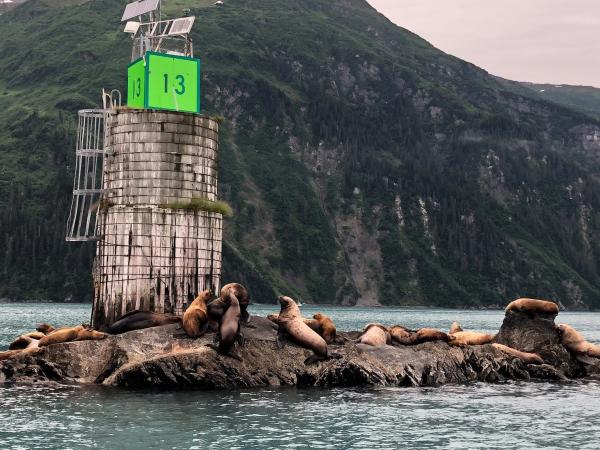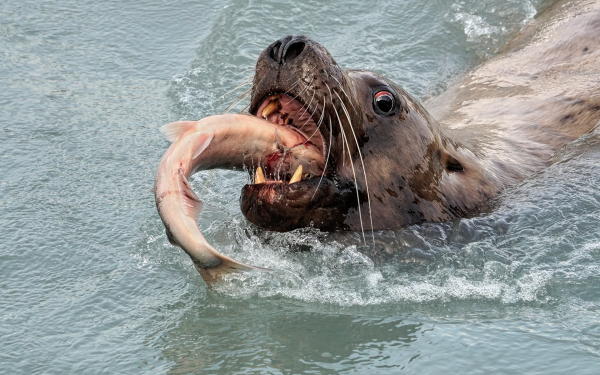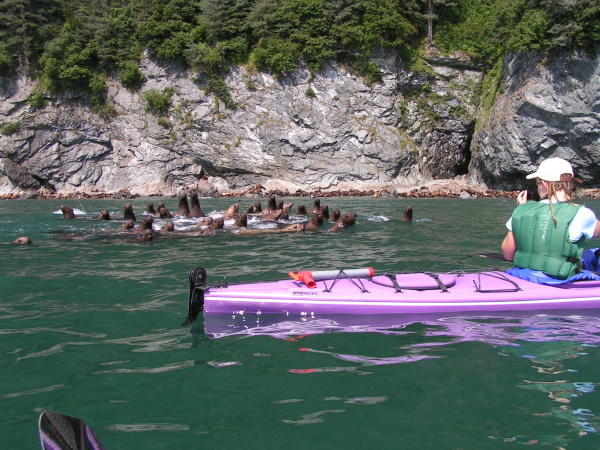Steller Sea Lions
Steller sea lions (Eumetopias jubatus), also known as as Northern sea lions live in the waters that surround Alaska, such as the Bering Sea and Aleutian Islands, and the Gulf of Alaska, including Prince William Sound. Steller sea lions are pinnipeds, making them relatives harbor seals.

Sea Lions in the Port of Valdez. Photo from Pangaea Adventures.
Behavior
They feed on marine cephalopods and fish, and can often be seen in the Port of Valdez feasting on our salmon runs. Sea lions use remote rocky shores as haul-outs or rookeries to come ashore to rest or care for their young. Listen for the distinctive roaring sound they make.

"Down the Hatch". Photo by Gary Minish.
Safety & Etiquette
"All major Steller sea lion haulouts and rookeries throughout Alaska are protected by regulation. Extra caution is needed in these areas to prevent harassment of Steller sea lions in their critical habitat," NOAA Fisheries
Please give sea lions space, for your safety and theirs. If you're exploring Prince William Sound or Port Valdez in a personal boat or kayak, or hiking past a rookery or haul-out, please view sea lions from a respectable distance. For more details, please consult the Marine Mammal Viewing Guidelines for Alaska from NOAA Fisheries.

Viewing sea lions from a kayak. Photo by Anadyr Adventures.
Viewing Locations
Sea lions may be seen in Valdez most easily from the Solomon Gulch Fish Hatchery on Dayville Road, where they are often seen eating salmon in the summer. Look for sea lions in the water from other areas along Dayville Road, such as Allison Point, a popular fishing spot. Sea lions may also be spotted by hiking out on Shoup Bay Trail, or by taking a wildlife tour or boat charter out to Shoup Bay or to Columbia Bay. They are also often spotted resting on navigational aids in Port Valdez.
Stellar Sea Lions Fact Sheet
From Alaska Department of Fish & Game











